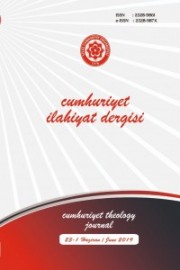Emevîlerde Haccâc b. Yûsuf Döneminden İtibaren Mevâlîden Cizye Alınması ve Arka Planı
Jizya Tax Levied on Mawālī By Al-Ḥajjāj ibn Yūsuf’s Period in Umayyads and Its Background
Author(s): Yunus AkyürekSubject(s): History of Islam, Fiscal Politics / Budgeting
Published by: Cumhuriyet Üniversitesi İlahyat Fakültesi
Keywords: History of Islam; Mawālī; Jizya; Combined Jizya; Kharaj;
Summary/Abstract: The Umayyad State is widely criticized in the West as well as in its own region. Actually, this is normal situation. Because Hijaz Arabs who had no state experience, built a multinational state in short period of time. Yet, this caused serious matters. The fundamental point of the criticism is the payment of tax, also called jizya, which is taken from residents (mawālī) of Khorasan and Transoxania. However, in most studies on this subject, it is understood that the jizya taken from mawālī is combined jizya and kharja, which is different type of tax. Although mawālī was tested for whether it passes religious criteria in critic periods or not, this situation did not last throughout the entire Umayyad history. It was continued for fifteen and twenty years. In this period, it was understood that the jizya tax taken from the mawālī, was caused by the unlawful practices of some regional governors, most of them were non-Muslim local tax officials and all their purpose was to collect the amount of combined jizya. It cannot be said that the Umayyad caliphs officially ordered written instructions in order to take the conceptual sense from the mawālī part. But some Khorasan governors, who detected that taxes were decreasing, blinked at the collection of the jizya from the mawālī.
Journal: Cumhuriyet İlahiyat Dergisi
- Issue Year: 23/2019
- Issue No: 1
- Page Range: 331-351
- Page Count: 21
- Language: Turkish

